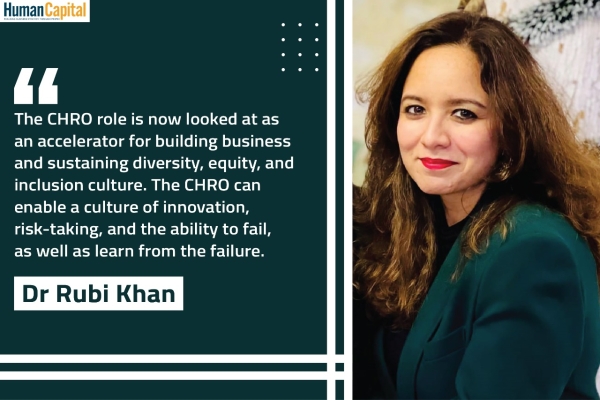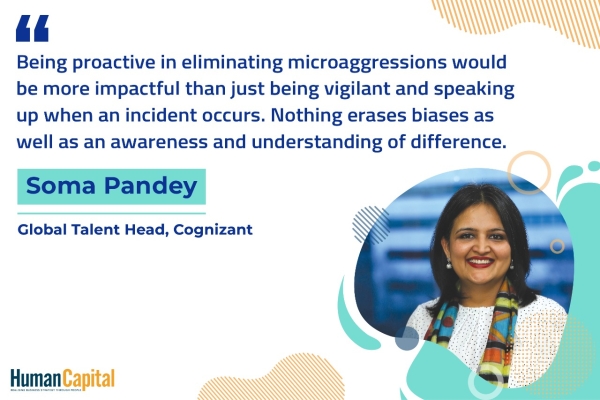Most people agree that succession planning is one of those things that befit an organisation. Hence, there must be a valid reason for the same being done so rarely! Actually, there are several reasons why succession planning is devilishly complex. Let us look at some of them.
Firstly, succession planning means different things to different people. For some, it means planning the succession for all the people above a certain level in the company’s corporate hierarchy. A common practice is to include everyone in the C-suite as also the business heads. For the others, the target set covers all ‘critical’ people. The criteria for establishing criticality then emerges as a point of debate. The usual resolution to such a dilemma is to lower the rank threshold above which all executives are candidates for succession planning. This significantly widens the target set, and the magnitude of the task involved.
Having settled on the target group, the next challenge is the identification of potential successors. Some organisations focus on potential successors only from their employee pool. That puts a limit on choice, and may not even be an optimal solution for the organisation. It may not always be practical to identify and groom a successor to someone who has a multifunctional skill set. It may be better to hire a person doing a similar job in another organisation. Consider, for instance, someone heading the administration of security, civil & electrical maintenance, cafeteria services, transport, travel bookings, and housekeeping with a team of people, each heading one or more of these responsibilities. It would be a challenge to prepare any one of those direct reportees to manage all the other activities, especially where those activities have been outsourced, and involve significant vendor management and contract administration. It would be easier to hire a person from another organisation who has been handling all or most of these sub-functions.
Exit of potential successors
Also, since it is often not known when the succession will happen, people who are being prepared for that role may become restless, and use their new skills to negotiate a better option elsewhere. The exit of potential successors is a real threat. The uncertainty around the date of succession also interferes with the identification of successors from outside the organisation. Those identified may get promoted, and become unaffordable, or develop roots in one geography, because their progeny have entered a crucial stage on the academic front. For such reasons, the identification of successors inside and outside the organisation needs to be a continuous process and not a onetime task. In other words, more work for HR!
Thirdly, irrespective of whether the successors are identified internally or otherwise, there is the related problem of settling on the number of candidates who should be identified and groomed. Merely choosing one makes it easier to plan the preparation, but given the risks mentioned above, organisations often settle on two or even more potential successors for each role. And that throws up a different set of issues. For one, the candidates may get a sense of entitlement to a position that is possibly a few years ahead. And this may affect their behaviour negatively. More importantly, if and when the succession happens in reality, the successors not chosen may become disgruntled and leave. The famous case involving Jack Welch, the former CEO of GE, is still fresh in the minds of many HR managers. When Immelt was named as the successor, the other two being groomed as potential successors left immediately. One can only wish that a sound succession plan had been drawn up to groom their successors! This particular problem can be minimised by keeping succession planning a confidential activity, but that is very hard to do.
It is hard to give special treatment to a set of people, to equip them for a higher role, without them and the others becoming certain that the higher role is going to be theirs in time.
Succession planning for leadership roles
Some organisations are of the view that senior positions above a threshold do not require special domain knowledge, but a generic set of leadership qualities and managerial skills. In other words, people playing one of those roles can easily learn to be equally effective in a role, which is slightly different. Such organisations identify people a level below the target set, choose the ones with potential, and groom them all in a set of generic skills. These covenanted A-listers can then be expected to easily take on any of the roles above them. This is a bit like looking for a key not where it was lost, but where there is more light. This is because important senior positions have two role requirements that go beyond generic skills. One is a deep knowledge of their domain, like knowledge of legal requirements and global commercial practices for successful procurement management in a large diversified operation. The second is the social capital such people accumulate over time, like the relationships with key vendors, customers, competitors, industry bodies and government departments. This is very hard to transfer, especially to a person who is not currently playing the senior role, but may be called upon to do so at some juncture in the future.
A fifth challenge comes from the person whose successor is being planned. If the person is not nearing retirement and no special upward path is visible to her, she may see the preparation of a successor as a prelude to easing her out of her current job. This might affect her behaviour in a variety of ways, including her decision to leave before she is fired. If this happens, it would be a case of succession planning accelerating the succession! Even when nearing retirement, or exit on promotion to another role, the incumbent may be reluctant to transfer knowledge to a junior because of latent insecurities, and also because she may have her own views on who should be the successor. Usually, if incumbents have a choice, they like to lobby for the most compliant reportee as their successor, and may not cooperate with the Management’s choice made after detailed potential assessment. This may lead to inadequate preparation for the successor leading to poor performance and a chance for the incumbent to say ‘I told you so’.
Finally, if succession planning is indeed hard, and an organisation chooses to do so only for critical roles, we return to the question of determining criticality. A person can be critical at any level of seniority. A mid-level executive who has built and nurtured relationships with a major customer, and has grown the share of business from that customer can be a critical resource. A liaison officer who can negotiate the labyrinth of large government bureaucracies can be a critical resource irrespective of rank.
If the organisation has gone out of its way to bend compensation and promotion policies to accommodate a person, she is clearly a critical resource. However, identifying critical resources using this logic has political implications. How does a senior manager accept that she is not a candidate for succession planning, but her junior is?
Looking at minimal disruption
A more practical approach would be to look not at succession, but minimal disruption, until a replacement is found from within or outside. If it typically takes five months to fill a position, all executives should be asked to annually create a plan for five months of uninterrupted operations over the exit of any of their reportees. This plan may provide for revised work allocation amongst existing reportees, and importantly, the executive herself ‘stepping down’ to partly play the role of the employee who has exited. If every manager signs up to such a plan, reviewed critically by her manager, the organisation will have achieved the desired goal of undisrupted operations. Managers who commit to such plans will be compelled to review and reassign work, ensure ‘shadowing’, stay current themselves, and try internal job rotation to ensure that they can execute on their plan when required.
Replacing formal succession planning by limited continuity planning may be a practical way forward when work organisations are morphing because of technology change. Why struggle to prepare for a successor for a role that may not be around for long?
Are you comfortable working with dispersed colleagues?
Trending
-
SBI General Insurance Launches Digital Health Campaign
-
CredR Rolls Out 'Life Happens' Leave For Its Employees
-
Meesho Announces 30-Week Gender-Neutral Parental Leave Policy
-
Microsoft Unveils Tech Resilience Curriculum To Foster An Inclusive Future
-
60% Indian Professionals Looking For Job Change Due To COVID: Survey
-
SpringPeople And Siemens Collaborate For Digital Transformation Push
-
86% Professionals Believe Hybrid Work Is Essential For Work Life Balance: Report
-
Almost 1 In Every 3 People's Personal Life Affected Due To Work Stress
-
Meesho Rolls Out Reset And Recharge Policy For Employees
-
80% Of Talent Leaders & Academics Say Pandemic Changed Skill Needs For Youth: Report
-
Hero Electric Rolls Out 'Hero Care' Program For Employees
-
Human Capital In Collaboration With ASSOCHAM Hosts Virtual Conference
-
IKEA India, Tata STRIVE Collaborate To Create Employability And Entrepreneurship Opportunities
-
SAP India, Microsoft Launch Tech Skilling Program for Young Women
-
DXC Technology, NASSCOM Collaborate For Employability Skills Program
-
Lenskart To Hire Over 2000 Employees Across India By 2022
-
Mindtree Launches Learn-and-Earn Program
-
Tata AIA Extends 'Raksha Ka Teeka' To Its Employees
-
Swadesh Behera Is The New CPO Of Titan
-
NetConnect Global Plans To Recruit 5000 Tech Professionals In India
-
Hubhopper Plans To Hire 60% Of Indian Podcasters By 2022
-
Corporate India Needs More Women In Leadership Roles: Report
-
Aon to Invest $30 Million and Create 10,000 Apprenticeships by 2030
-
Tech Mahindra Launches ‘Gift a Career’ Initiative for Upskilling of Youth
-
40% Women Prefer Flexible Working Options in Post-COVID World: Survey
-
3 out of 4 companies believe they can effectively hire employees virtually: Report
-
Vodafone , CGI and NASSCOM Foundation launch digital skills platform
-
Odisha: Bank, postal employees to deliver cash for elderly, differently-abled persons
-
Skill India launches AI-based digital platform for "Skilled Workforce"
-
Hiring activity declines 6.73% in first quarter: Survey
-
70% startups impacted by COVID-19 pandemic
-
Bajaj Allianz Life ropes in Santanu Banerjee as CHRO
-
Over 70 Percent MSMEs look at cutting jobs to sustain businesses
-
93 Per Cent employees stressed about returning to office post-lockdown
-
Johnson & Johnson India announces family benefits for same gender partners
-
Indian firms turning friendly towards working mothers
-
Welspun India names Rajendra Mehta as new CHRO
-
Wipro partners with NASSCOM to launch Future Skills platform



Human Capital is niche media organisation for HR and Corporate. Our aim is to create an outstanding user experience for all our clients, readers, employers and employees through inspiring, industry-leading content pieces in the form of case studies, analysis, expert reports, authored articles and blogs. We cover topics such as talent acquisition, learning and development, diversity and inclusion, leadership, compensation, recruitment and many more.
Subscribe Now












































Comment